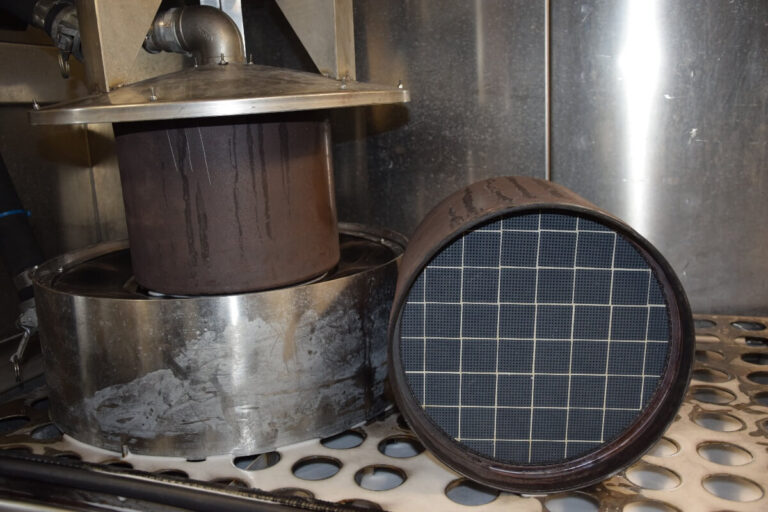You may already know how the cooling system of your diesel engine equipment can affect its performance and safety. But did you know the diesel particulate filter (DPF) can also have a big impact on the efficiency of your heavy equipment? If your equipment has a DPF, it’s important to understand its function and to keep it regularly maintained. Neglecting this component could lead to costly problems with your diesel fuel engine.
What is a diesel particulate filter?
A diesel particulate filter, or DPF, is an exhaust after treatment device that filters out particulates like soot, ash and unburned hydrocarbons from a diesel fuel engine. Most DPFs are made of a ceramic material in a honeycomb structure. Not only do DPFs trap potentially harmful substances, they also help diesel engine vehicles reduce emissions so they comply with EPA emission standards.
A DPF works in combination with an oxidation catalyst and exhaust gas recirculation (EGR) valve. Noxious soot is trapped in the material of the DPF and when enough of it accumulates, a controlled amount of unburned fuel passes through the filter so it can burn up the built-up soot. This process can dramatically reduce the amount of particulates that build up in the engine. If unchecked, that buildup leads to a damaged filter, major engine malfunctions and dangerous emissions. On top of those problems, there are potential fines for non-compliance with air pollution laws.
How to properly maintain your DPF
Most DPFs are designed to clean themselves, but if your equipment primarily runs at low speeds over relatively short distances, that self-cleaning may not occur often enough. Without regular cleaning, the filter becomes blocked by accumulated particulates. Most manufacturers recommend a DPF cleaning at least once per year. Some engine manufacturers recommend certain cleaning intervals based on mileage. The lifespan of a DPF varies, so it’s best to get advice about a maintenance plan from a diesel equipment expert. Some other factors that can affect the maintenance and performance of your DPF are the type of oil you use, the quality of fuel, and how often you operate the equipment at a low fuel level.
When a DPF is full of soot, it needs to regenerate itself to prevent blockage. There are two types of regeneration: passive and active. In passive regeneration, heat builds up in the engine until soot combines with oxygen to create carbon dioxide, which then passes through the filter. In active regeneration, fuel is injected into the exhaust stream and over the oxidation catalyst to generate heat. That heat then converts soot to carbon dioxide. Both passive and active regeneration happen naturally as the vehicle is driven. In some models, DPF regeneration can also be triggered manually when the vehicle is in park.
Unlike soot, ash that accumulates on the filter cannot be converted to carbon dioxide by heat. To remove ash, the filter must be taken out and manually cleaned. It’s best to establish a professional maintenance plan to make sure these cleanings are done properly and on a regular basis. To get in touch with an expert diesel particulate filter cleaning and maintenance team, contact Industrial Radiator Service today.


[…] have covered the basics of diesel particulate filter (DPF) cleaning and maintenance and how the DPF affects your overall exhaust system in previous blog posts. With the expansion of […]
[…] filter (DPF) plays an important part in the health of your diesel engine equipment. This exhaust after treatment device filters out particles like ash, soot and unburned hydrocarbons that can hurt your engine’s […]